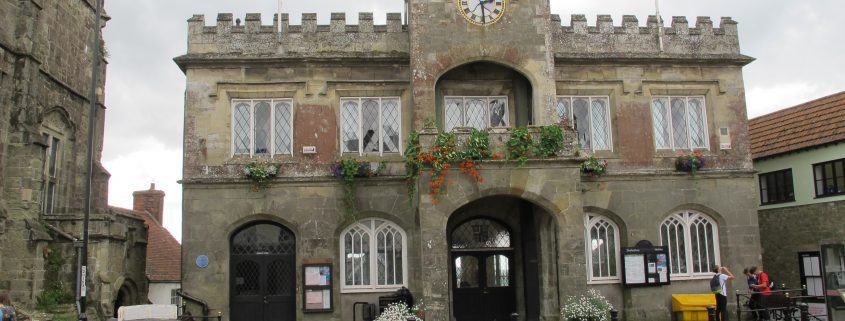Tudor Disregard for Health and Safety at its Peak in the Summer
Professor Steven Gunn of Merton College Oxford is leading a project to sift through 9,000 sixteenth-century coroners’ reports from all over England held in the National Archives and has found that most fatal accidents occurred between April and September. On Tuesday 24 September at 7.30pm he delivers the Teulon Porter Memorial Lecture in Shaftesbury Town Hall when he promises examples of Everyday Life and Accidental Death in Tudor Dorset and Wiltshire. The lecture is free to members of The Shaftesbury & District Historical Society while non-members may pay £5 at the door. Prof. Gunn is one of our leading scholars of the Tudor period with numerous books to his name and delivered the prestigious Ford Lectures in 2015.
He said: ‘Most people are enjoying the recent warmer weather but this wasn’t always good news in Tudor England, in which nearly three-quarters of all fatal accidents in 1558-60 occurred between April and September when farming work was at its height.
‘Deaths happened in various and unexpected ways – some were straightforward accidents with scythes or cart crashes, but other unfortunate people are recorded as mangling themselves in the machinery of windmills or watermills, turning carts on top of themselves when loading them with barley, falling out of trees when gathering fruit and nuts and even falling asleep by piles of hay that collapsed and suffocated them.
He added: ‘The autumn was a bad time for pig-famers, though, as October was the prime month for falling out of oak trees when collecting acorns to fatten up swine for slaughter.’
Today building and mining rank alongside farming as dangerous industries to work in and it was just the same in Tudor England. Miners were suffocated by coal-damp in Staffordshire and Yorkshire and workmen fell from roofs in Huntingdonshire and Westmorland. Timber was important for building and firewood and 14% of work accidents involved cutting or transporting wood.
Prof. Gunn said: ‘Tudor lumberjack technique seems to have been a bit wanting. Men in Bedfordshire, Cumberland, Hampshire, Somerset, Westmorland and Yorkshire were all hit by ash, oak or poplar trees they were cutting down. John Broke, a cloth-maker from Dalton in Yorkshire, was particularly unlucky because he was building a fence when an oak tree cut down some time before suddenly rolled downhill and hit him.’
The increased use of machinery means that nowadays only one per cent of fatal workplace injuries are caused by livestock, but animals were a major cause of fatalities in Tudor England. Prof. Gunn said: ‘We have found fatalities caused not only by horses and cattle but also by sheep and pigs. One five-year-old boy from Huggate in Yorkshire was attacked by the pigs he was herding. But horses were the most dangerous animals, causing 93% of livestock injuries by throwing their riders, kicking people, dragging them into water or running away with carts.
He added: ‘The crowded streets round London must have been a particularly dangerous place to ride. One poor butcher’s boy, William Randall, fell into a pit at the side of the road in St Martin-in-the-Fields parish at eight o’clock on a February evening trying to carry a calf slung across his horse’s saddle back to his master’s shop in St Clement Danes.’
Fatal accidents in the outdoors became such a problem that handbooks were even made to warn people of unexpected dangers. Prof. Gunn explained: ‘Dealing with pests was just as risky. Tudor farming handbooks advised caution when climbing trees to kill crows in their nests. It sounds like health and safety gone mad, but given that we have found several men who fell to their deaths doing just this, perhaps it was necessary!’
The project is funded by the Economic and Social Research Council and its website can be accessed by clicking here



